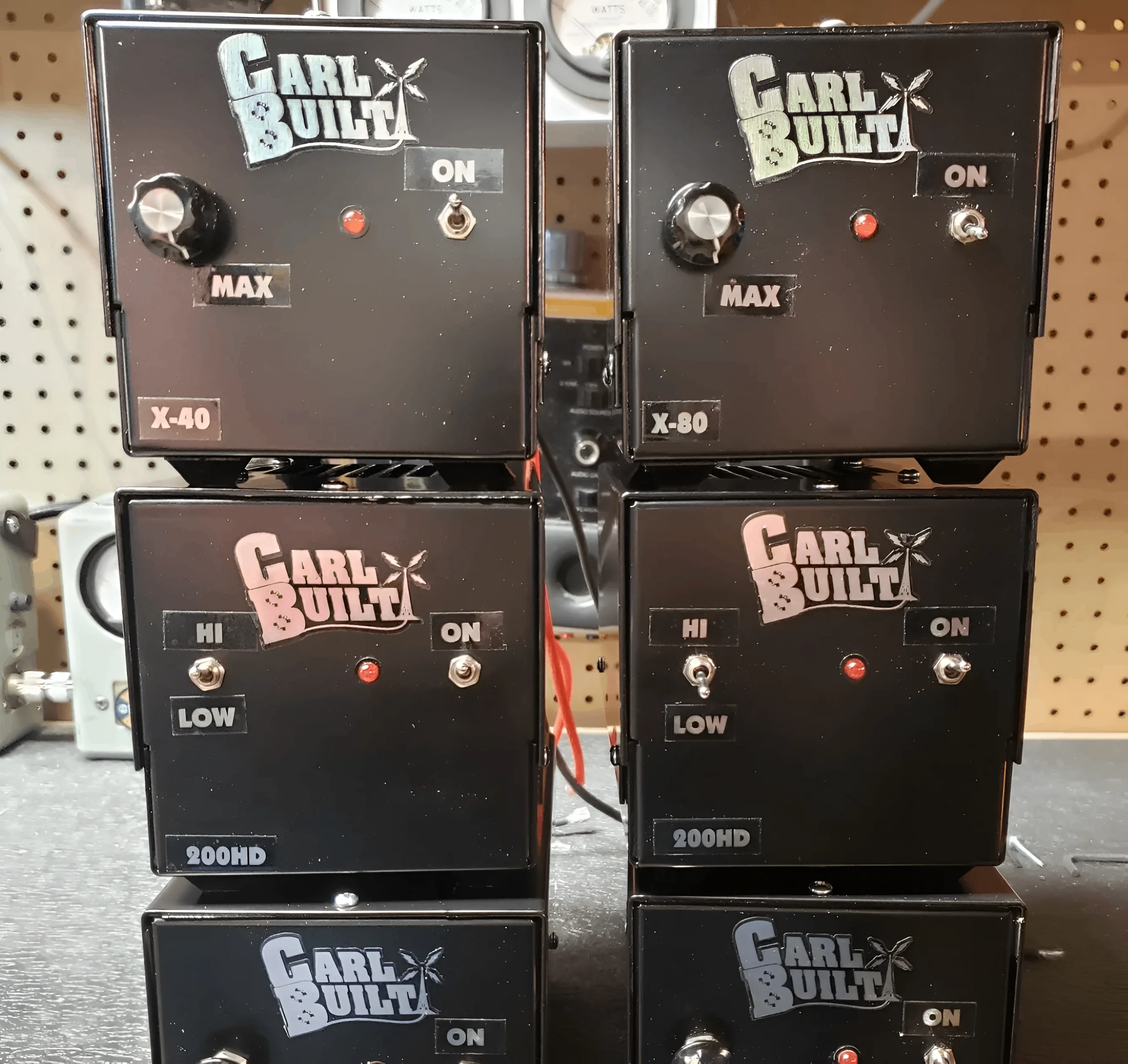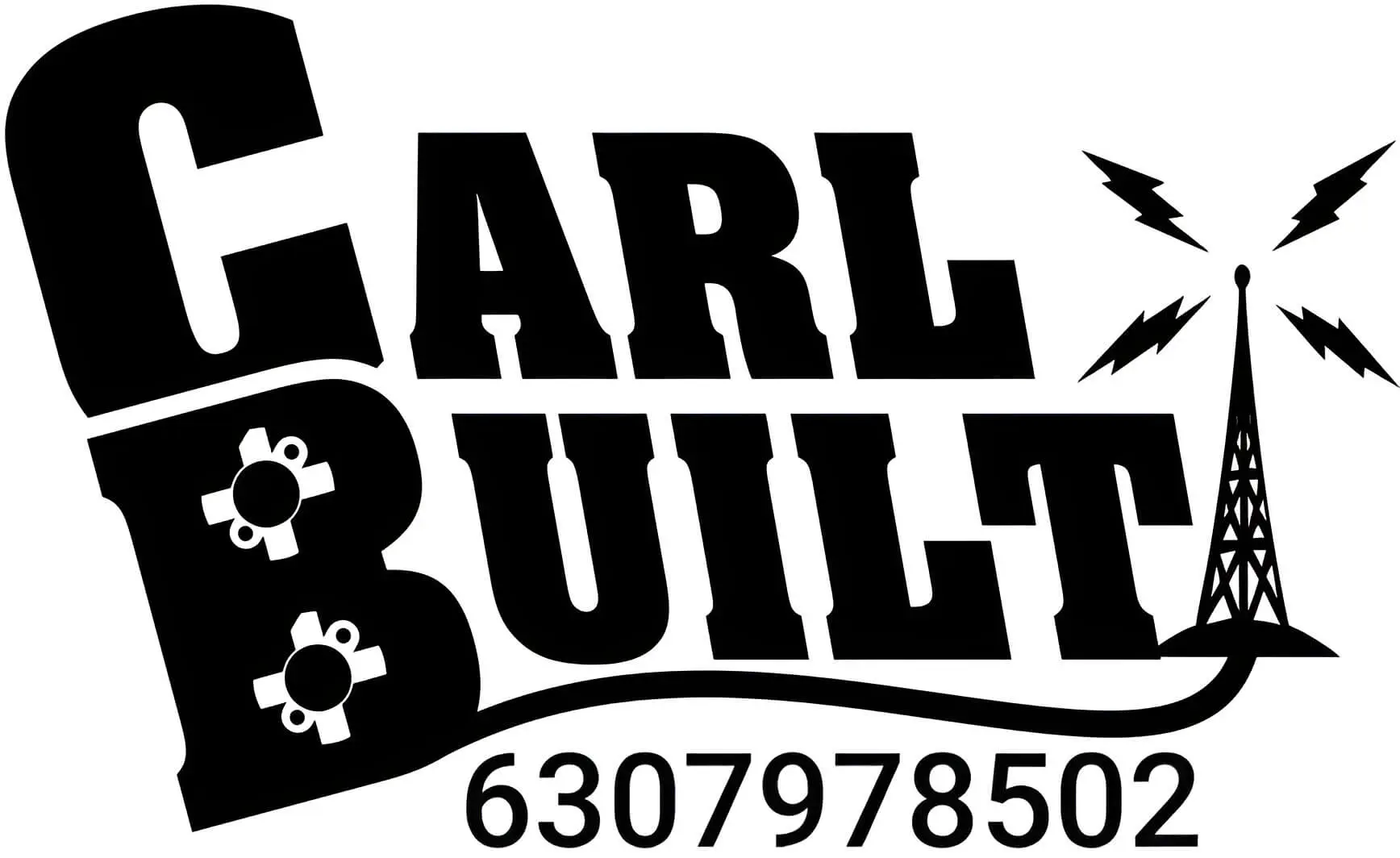
AMP Installation 101
Make sure your vehicle alternator can handle the added power draw of the new amp. As a rule of thumb, smaller vehicles need about 30 A to run, and larger vehicles need 40 A or more. This does not include any accessories you may have added. (For example, if your vehicle is large and has a 100A alternator, this will leave about 60A to power your new amp.) It is recommended that you upgrade the charge wire from the alternator to the battery by paralleling a 4AWG or larger wire to the battery. Also, add 4AWG ground wire from the alternator case to the chassis. Make sure the positive charge wire(s) from the alternator is clear of any sharp metal objects and secure. Use of a wire loom is a good idea.
Preparing the Vehicle for AMP Installation
Now you need to get the vehicle ready to handle the power of the new amp. Ground everything! Ground the chassis to the battery with a 4AWG wire if you plan on running less than 500 watts, and 1/0 if you plan on running 500-1000 watts. Whatever size wire you choose, make sure it is very finely stranded, like welding cable. All connections should be crimped and/or soldered with the appropriate terminals on the power wires. Before attaching the wire, clean all connection areas down to a clean bare metal surface, and then protect it from corrosion or oxidation after making the connection. (Note: If you solder the terminals on, use a non-corrosive flux when you solder). (Any more power than 1000 watts, and you should already know what you are doing or get an expert to do the entire setup.) Ground the body (and bed, if in a pickup) to the chassis. Ground the hood (and trunk, if a car) and doors (if using a mirror mount) to the body. Grounding straps are the best, but heavy gage wire will work. Try to keep the ground straps/wires to 12 inches or fewer.
Setting Up Antenna SWR
Get the antenna SWR down to 1.3:1 or less on channels 1-40. The lower, the better. Make sure that your antenna can handle double the power you're going to put into it. Also, make sure the coax can handle the peak power you plan to put through it. RG58 can handle 500 watts peak, RG8X (Mini 8) can handle 1000 watts peak, Times 240 can handle 2000 watts peak, and RG213 can handle 4000 watts peak. High SWR will cause the transistors to fail in the amp and possibly the radio. Some off-the shelf amps can handle a little higher SWR, but the Comp boxes won't live very long with an SWR above 1.3:1.
Adjusting Radio Dead Key (DK)
Turn your radio's DK (Dead Key) down to about 2 watts. If you don't know how to do this, have a good shop set the DK for your amp. Each amp is a little different and may require a different DK, so it is best to set the DK of the radio, so the amp is putting out A¼ (25%) of its rated value. This may be 1 watt for some amps, 20 watts for other amps, just remember the ratio of 1:4 for best performance. If your final amp is rated at X watts peak, the DK should be A¼ of that from the final amp. Also, if the amp is rated at X watts RMS, the DK should be A½ of that.
Choosing Wire Gauge and Fuse/Breaker
Select the appropriate wire gage and fuse or breaker for the power needs of your amp. Breakers should be rated 25% higher than the appropriate fuse for the same application. All fuses and breakers must be located directly at the battery(s). Select the appropriate wire AWG from this list.
- AWG Max. Amperage
- 0000 (4/0) 300 A
- 000 (3/0) 260 A
- 00 (2/0) 225 A
- 0 (1/0) 195 A
- 2 125 A
- 4 90 A
- 6 70 A
- 8 50 A
- 10 30 A
- 12 20 A
- 14 15 A
- 16 10 A
Mounting the Amplifier
Select a location to mount your amp. Amps need ventilation, so choose a location that will not restrict the air from following around the amp and where it won't get water, coffee, or soft drinks spilled on or in it. Some amp manufacturers have remote kits for turning on and off the amp if it is mounted where you can not readily access it while driving.
Routing and Securing Power Wires
Plan out the power wire routing to the amp from the battery. Keep the amp power wires from running parallel to any coax you have or will be running. Place an appropriate-sized fuse or breaker at (or very near) your battery. (Suggestion: Some batteries come with top and side posts, this makes it very nice to attach your amp power wires. If your vehicle uses a side posts, and you have one of these batteries, use the marine style connectors for the top posts with wing nuts to attach the amp power wires.) Route the amp power wires so they do not chafe or get exposed to exhaust heat that could melt or damage the insulation. Use a grommet to protect the wires where they enter the cab or pass through the sheet metal of the vehicle, and seal it with some silicone adhesive. If you have to drill an opening in the firewall of the vehicle, it is usually easiest to drill next to the steering column. Many vehicles have drain holes or plugs that can be used to run the wires through. DO NOT connect the power wires to the battery until you have completed the entire installation!
Securing and Connecting Power Wires
After routing the amp power wires, secure the wires so they do not chafe, rub, or hang down where they can be damaged. Using a wire loom is also a good idea for protecting the wires from possible damage. Connect the power wires to the amp, making sure you have the polarity correct. Connect the +12V wire from the amp to the +12V wire from the fuse. Keep the wire short from the other side of the fuse to the battery, but do not connect it to the battery at this time. Crimp and/or solder the appropriate terminals to the power wires. (Note: If you solder the terminals on, use a non-corrosive flux when you solder.) You may decide to put a quick disconnect on the power wires near the amp, but it is not necessary.
Selecting and Using Coax Jumpers
Select jumpers (Coax) of the appropriate lengths to run between the radio, amp, meter or filter (if applicable), and antenna. Make sure that the jumpers can handle the power you decide to put through them. Usually, RG8X can handle most of the amp installs under 1000 Watts PEP. Use the shortest jumpers possible, except at the antenna, if the manufacture has a preset length attached to the antenna. (Note: Sometimes jumper lengths may have an effect on the SWR meter reading you get. You may have to try different-length jumpers if you have an SWR problem. This is really just fooling the device/meter and does not really change the antenna's SWR. Tuning the antenna and properly grounding the vehicle is the best way to reduce the SWR.)
Checking Polarity and Jumper Connections
Before connecting the power wires to the battery and powering up your amp, check the polarity of the wires and make sure the jumpers are on in the appropriate connectors. Having the jumper from the radio to the amp in the wrong amp socket will smoke your radio the first time you key it up.
Verifying SWR Before Powering Up
With the amp off, check the SWR from the radio to the amp, and then again from the amp to the antenna. If any of the SWRs are greater than 1.3:1, you have to find out what the cause is and get it down to 1.3:1 or less. Enlist the help of someone who knows what they are doing if you can't get the SWR down. Do not power up the amp and key the radio with a high SWR, or something could burn up. Most likely, it will be your new amp.
Connecting Power Wires to Battery
If your SWRs are 1.3:1 or less, then connect the amp power wires to the battery. Turn on the amp and look for signs that all is working properly, i.e., lights, fans, etc.
Testing Amp Operation and Signal Quality
With the amp on, turn on the radio, key the mic quickly on channel 20, and listen for any strange sounds like feedback or buzzing. (Channel 20 is usually used for testing radios because it is in the middle of the band. On this channel, you are unlikely to disrupt any communications.) Make sure the amp un-keyed and that you can still receive/hear incoming signals. If it does not, un-key turn the amp, turn it off immediately, and get help from an expert before continuing.
Final SWR Check With Amp On
Now check the SWR with the amp on between the radio and amp and between the amp and antenna. If any of the SWRs are greater than 1.3:1, you have to find out what the cause is and get it down to 1.3:1 or less. Enlist the help of someone who knows what they are doing if you can not get the SWR down.
Conducting a Radio Check
If your SWRs are 1.3:1 or less, then call out for a radio check. Listen for any strange noises when you talk. Ask anyone that responds to how you sound and if there are any problems with your audio that they can hear. If all is OK, then you're ready to go.
Your installation of your amp is done correctly now!
